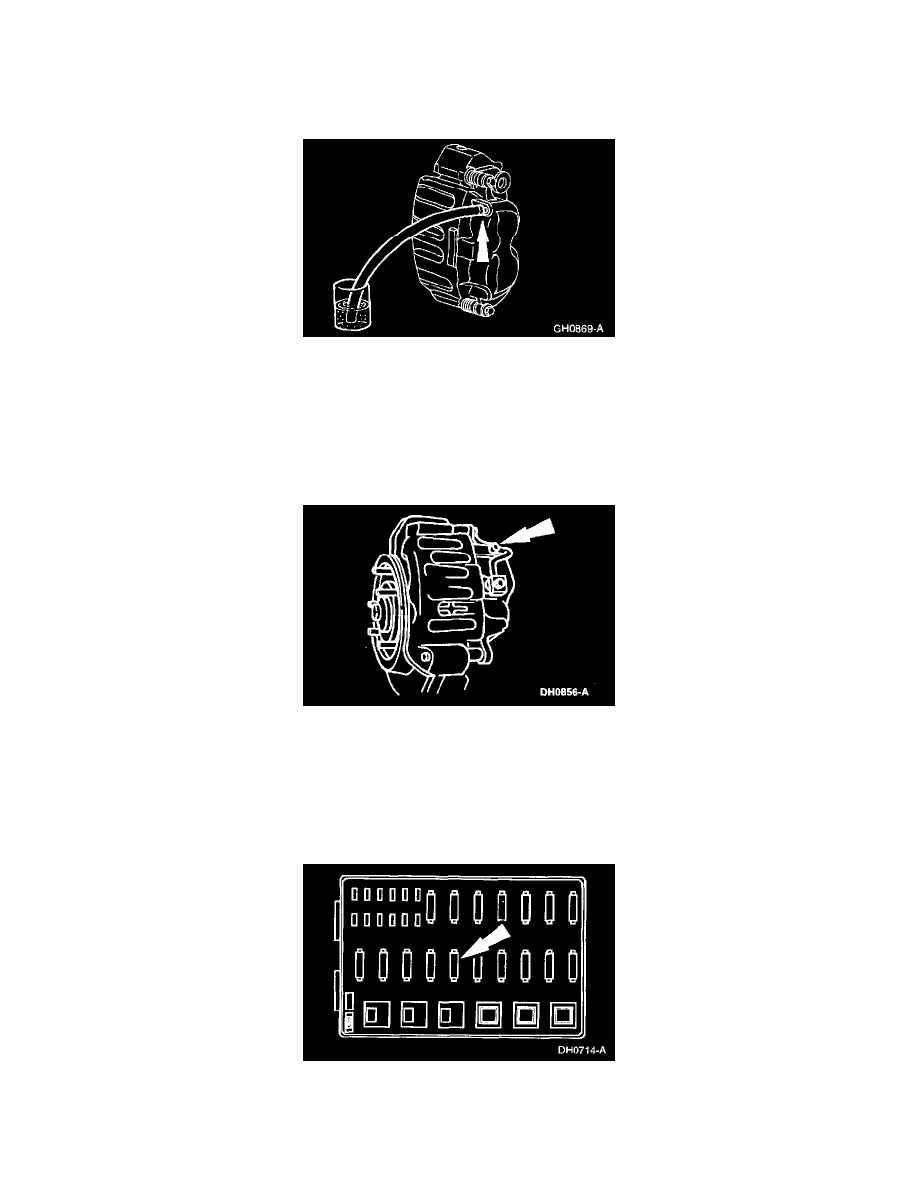F 350 2WD Super Duty V10-6.8L VIN S (1999)

Brake Bleeding: Service and Repair
Bleeding After Caliper Replacement
1. NOTE: It is not necessary to do a complete brake system bleed if only the disc brake caliper was disconnected.
Place a box end wrench on the disc brake caliper bleeder screw. Attach a rubber drain tube to the disc brake caliper bleeder screw, and submerge
the free end of the tube in a container partially filled with clean brake fluid.
2. Have an assistant pump the Brake Pedal (BP) and then hold firm pressure on the brake pedal.
3. Loosen the disc brake caliper bleeder screw until a stream of brake fluid comes out. While the assistant maintains pressure on the brake pedal,
tighten the disc brake caliper bleeder screw.
-
Repeat until clear, bubble-free fluid comes out.
-
Refill the brake master cylinder reservoir as necessary.
4. Tighten the disc brake caliper bleeder screw.
Hydro-Boost Bleeding
1. NOTE: The Hydro-Boost power brake booster is generally self-bleeding, and the following procedure will normally bleed the air from the power
brake booster. Normal operation of the vehicle will further remove any additional trapped air.
Fill the power steering oil reservoir with Motorcraft MERCON(R) ATF XT-2-QDX or -DDX or MERCON(R) equivalent.
2. Remove the Powertrain Control Module (PCM) fuse to prevent the engine from starting.
3. Crank the engine for several seconds.
